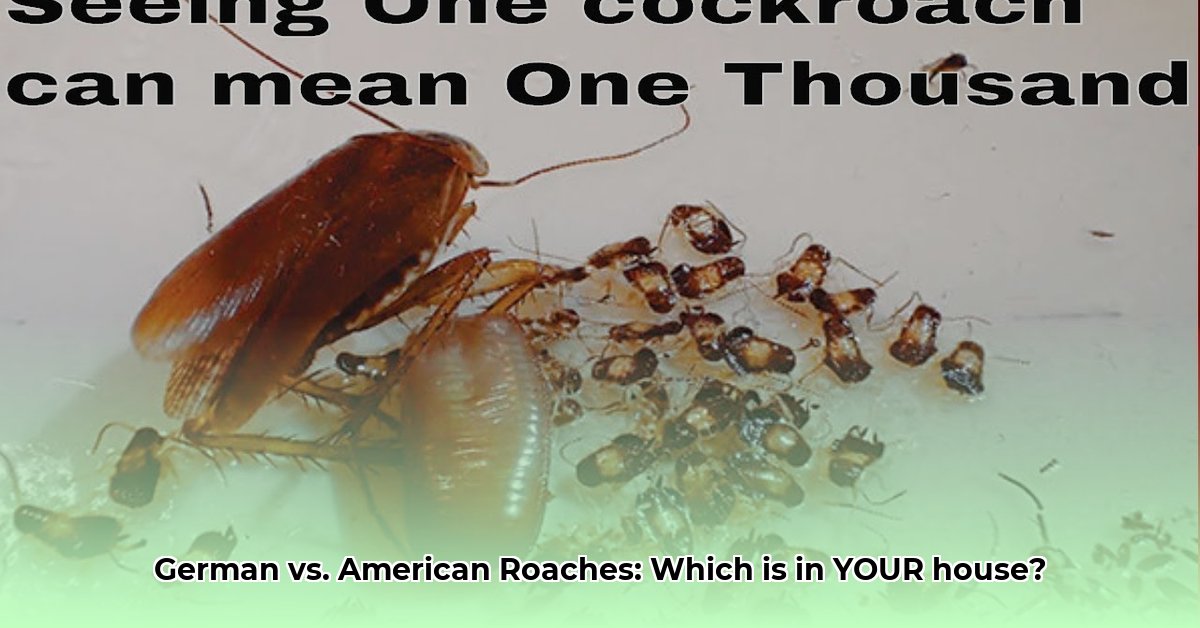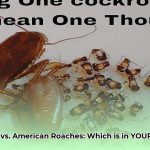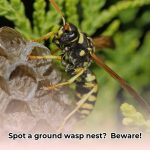Think all roaches are the same? Think again. Misidentifying these common household pests can lead to ineffective treatments and prolonged infestations. This guide will arm you with the knowledge to distinguish between German and American roaches, understand their habits, and implement the right strategies for effective control and prevention.
Spot the Difference: German vs. American
While both species share the “cockroach” label, their differences are significant. Knowing these distinctions is crucial for targeting your pest control efforts.
Size and Appearance
The size difference is striking. German roaches are small, roughly ½ inch long, about the size of a fingernail. They are light brown with two distinct dark stripes running parallel down their backs. American roaches, however, are considerably larger, measuring 1 ½ to 2 inches or more—some even reaching 2 ¼ inches—about the size of a quarter. They are reddish-brown with a distinctive yellowish figure-eight pattern on their thorax (the area behind the head).
| Feature | German Roach | American Roach |
|---|---|---|
| Size | ~½ inch | 1 ½ – 2+ inches |
| Color | Light brown with two dark stripes | Reddish-brown with yellow figure-eight marking |
Habitat and Behavior
German roaches prefer warm, humid environments close to food and water sources. You’ll likely find them in kitchens and bathrooms, hiding in cracks, crevices, and behind appliances. American roaches, while they may venture indoors seeking food and water, are more likely to inhabit damp, dark areas like basements, sewers, and drains. A key behavioral difference? American roaches can fly, while German roaches rarely do.
| Feature | German Roach | American Roach |
|---|---|---|
| Habitat | Kitchens, bathrooms | Basements, sewers, drains |
| Behavior | Fast-moving, rarely fly | Can fly, more solitary |
Breeding Habits
German roaches are prolific breeders. Their egg capsules contain numerous eggs, and they mature quickly, leading to rapid infestations. American roaches reproduce more slowly, but their larger size can still make even a small infestation problematic.
| Feature | German Roach | American Roach |
|---|---|---|
| Reproduction | Rapid | Slower |
Roach Habits: Understanding the Enemy
Knowing your enemy’s habits is key to victory. Here’s a closer look at German and American cockroach behavior.
Diet
Both species are opportunistic omnivores. German roaches gravitate towards starches and sweets, feasting on crumbs, grease, and even book bindings. American roaches, while also not picky eaters, have a preference for decaying organic matter. They play a role in decomposition but will readily consume human food if available.
Behavior and Movement
German roaches are skittish and fast-moving, often found in groups near food sources. American roaches are more solitary except during mating. Their ability to fly, though not their primary mode of transportation, makes them particularly startling when they take to the air.
Eviction Notice: Effective Cockroach Control
Different roaches demand different tactics. A tailored approach is crucial for effective pest control.
German Cockroach Control
-
Bait Stations: Strategically placed bait stations are highly effective. These traps contain insecticide that roaches carry back to their nests, eliminating the colony.
-
Deep Cleaning: Thorough cleaning, including removing food debris, wiping down surfaces, and regular vacuuming, is essential for eliminating food sources and making your home less attractive.
-
Crack and Crevice Sealing: Sealing cracks and crevices with caulk prevents roaches from entering and harboring in your walls.
-
Targeted Insecticide Sprays: Use insecticide sprays in targeted areas where roaches hide, minimizing exposure to your family and pets.
American Cockroach Control
-
Baiting: Granular, liquid, or powder baits placed in damp areas are effective against American roaches.
-
Perimeter Treatment: Creating a barrier around your home with perimeter sprays helps prevent entry.
-
Dusting: Dusting voids, cracks, and hidden spaces can control nymphs and prevent new infestations.
-
Moisture Control: Addressing moisture issues, such as leaky pipes or damp basements, makes your environment less hospitable.
Prevention: Keeping the Roaches at Bay
Prevention is key. These proactive measures can significantly reduce your risk of infestation:
-
Seal Entry Points: Seal any cracks and gaps around pipes, windows, and doors.
-
Eliminate Food Sources: Store food in airtight containers, clean spills promptly, and don’t leave dirty dishes out.
-
Reduce Moisture: Fix leaks, ensure proper ventilation, and use dehumidifiers if necessary.
-
Maintain a Clean Home: Regular cleaning, vacuuming, and mopping deprive roaches of food and shelter.
Need Backup? Call in the Professionals
While DIY methods can be effective, sometimes professional pest control is necessary, especially for established infestations. Professionals have the expertise and specialized tools to handle tough infestations and can offer tailored solutions based on the specific roach species involved. They can also identify potential entry points and environmental factors contributing to the infestation. Don’t hesitate to seek professional help if your own efforts aren’t yielding results.
Ongoing Research and Further Exploration
Research on cockroach behavior and control methods is ongoing. Scientists are continually exploring new approaches, including the use of biological controls and the study of insecticide resistance. For more in-depth information, resources from university extension programs (such as the University of California Agriculture and Natural Resources department) and reputable pest control websites can be valuable. Understanding the latest research and recommendations can empower you to make informed decisions about the best course of action for your specific situation.
- Grass Forever in Livermore: Your Guide to Artificial Turf - April 22, 2025
- German Roaches vs. American Roaches: Key Differences and Control - April 22, 2025
- 150+ Flowers That Start With S: A Comprehensive Guide - April 22, 2025










